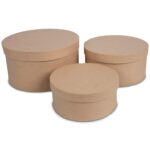The Epoxy Toughened Film for Aerospace Market is witnessing a significant growth trajectory as the aerospace industry accelerates its shift toward lightweight materials and advanced composites. This surge is primarily driven by the increasing adoption of high-performance adhesives and bonding solutions that enhance structural integrity and thermal stability in aircraft manufacturing.
Epoxy toughened films are engineered to provide superior adhesion, chemical resistance, and mechanical strength—critical attributes for modern aircraft structures. Their role in reducing overall aircraft weight while ensuring high bonding performance is reshaping how aerospace materials are designed and implemented globally. As aircraft manufacturers continue prioritizing efficiency and durability, the market is expected to register strong growth in the coming decade.
According to Research Intelo’s comprehensive analysis, global demand for epoxy toughened films is anticipated to expand steadily, with notable uptake across both commercial and defense aviation segments. The rising trend of sustainable, fuel-efficient aircraft is reinforcing the importance of these films in structural bonding and composite assembly applications.
Request a Sample Report:
https://researchintelo.com/request-sample/99395
Market Drivers: Innovation and Efficiency Define the Future
Several powerful growth drivers are shaping the global epoxy toughened film for aerospace market. Among the most prominent are:
-
Lightweighting in Aerospace Design: As fuel efficiency becomes a defining metric, the aerospace sector is actively replacing traditional metal-based fasteners with epoxy-bonded composites to reduce overall weight.
-
Rising Aircraft Deliveries: Growing commercial air travel and defense procurement programs are directly stimulating demand for advanced bonding materials.
-
Superior Thermal and Chemical Resistance: The ability of epoxy films to maintain structural performance under extreme conditions ensures their dominance in high-stress aerospace environments.
Additionally, the growing emphasis on composite bonding technologies and corrosion-resistant adhesive systems continues to drive R&D investments. These innovations enable improved fatigue resistance and enhanced durability—both crucial for next-generation aircraft.
Market Restraints: Cost and Manufacturing Complexities
Despite their benefits, epoxy toughened films face several challenges that may limit market expansion. High raw material costs, complex curing requirements, and sensitivity to temperature variations can increase production expenses. Furthermore, strict aerospace certification standards often extend product development cycles, impacting time-to-market efficiency.
Another restraint lies in the availability of alternatives, such as polyurethane and bismaleimide adhesives, which sometimes offer comparable performance at lower costs. Manufacturers must therefore balance performance optimization with affordability to remain competitive.
Nonetheless, advancements in formulation technologies and improved automation in film production are gradually mitigating these challenges. The integration of robotics and digital manufacturing systems is expected to streamline production and improve product consistency.
View Full Report:
https://researchintelo.com/report/epoxy-toughened-film-for-aerospace-market
Opportunities: Expanding Applications in Next-Generation Aircraft
The future outlook of the epoxy toughened film for aerospace market is highly promising. With the development of electric and hybrid aircraft, the demand for high-strength, lightweight adhesives is surging. These aircraft rely heavily on composite structures that require durable, flexible bonding solutions—an area where epoxy toughened films excel.
Additionally, increased investments in space exploration and satellite manufacturing are opening new growth avenues. Epoxy toughened films provide the mechanical stability required for thermal insulation and vibration damping in spacecraft components.
Emerging economies in Asia-Pacific, particularly China and India, are also investing heavily in aerospace infrastructure, creating lucrative regional markets. These nations are fostering local production and technological collaboration, which will likely enhance the adoption of epoxy-based composite materials.
Market Dynamics: Regional Insights and Growth Outlook
The North American market currently dominates global revenue due to strong aerospace manufacturing activity and robust R&D investments. Europe follows closely, driven by advanced composite research and sustainability initiatives in aviation. Meanwhile, the Asia-Pacific region is projected to record the highest CAGR owing to increasing aircraft production and maintenance activities.
Global market dynamics also indicate rising focus on aerospace supply chain optimization. As manufacturers streamline procurement and reduce dependency on traditional fasteners, epoxy toughened films are gaining traction as essential materials in the assembly process.
Key growth indicators suggest that the market value is likely to cross significant multi-million-dollar benchmarks by the early 2030s, underpinned by a strong shift toward performance-based material selection and efficient bonding processes.
Enquire Before Buying:
https://researchintelo.com/request-for-customization/99395
Technological Advancements: Toward Smart and Sustainable Materials
Innovations in nanotechnology and resin chemistry are transforming the epoxy toughened film landscape. Next-generation formulations are offering better heat resistance, flexibility, and adhesion to multiple substrates. Additionally, eco-friendly resin systems are being developed to minimize environmental impact and comply with evolving aerospace sustainability standards.
Automation and AI-driven manufacturing are also influencing market trends. Smart process monitoring ensures quality control and uniform curing, which improves film performance consistency. These advances are helping manufacturers meet strict aerospace specifications while reducing waste and production time.
As the aerospace sector continues embracing digital transformation, epoxy toughened films will play an even greater role in achieving lightweight, durable, and safe airframe structures.
Competitive Landscape and Future Growth Trends
While the market features a broad range of material suppliers and chemical formulators, Research Intelo’s study highlights that innovation leadership, cost efficiency, and sustainable production will define future competitiveness. Collaboration between aerospace OEMs and material developers is expected to accelerate new product introductions over the next decade.
Moreover, the integration of simulation and modeling software in adhesive design will help engineers predict bonding behavior more accurately, reducing development costs and enhancing structural reliability. This will contribute to the steady adoption of epoxy toughened films in both existing aircraft platforms and new aerospace projects.
Check Out the Report:
https://researchintelo.com/checkout/99395
Conclusion: A Strong Flight Path Ahead
In conclusion, the Epoxy Toughened Film for Aerospace Market is on a robust upward trajectory, driven by global demand for high-performance, lightweight materials that meet stringent aerospace standards. While cost and production challenges persist, innovation and digital manufacturing are set to redefine the competitive landscape.
Research Intelo’s latest report provides an in-depth analysis of market drivers, restraints, opportunities, and forecasts—empowering stakeholders to make informed decisions in this rapidly evolving field. As aerospace design continues advancing toward efficiency and sustainability, epoxy toughened films will remain at the heart of this transformation.



